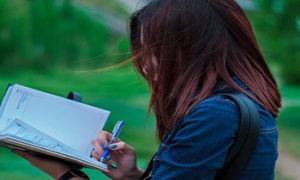An integrated curriculum in early childhood education in Australia focuses on holistic learning, where different subject areas and developmental domains are connected rather than taught in isolation. This approach aligns with the EYLF and the National Quality Standard (NQS), ensuring that children's learning experiences are meaningful and interconnected.
Key Features of an Integrated Curriculum in Early Childhood
-
Play-Based Learning: Encourages exploration and creativity while integrating literacy, numeracy, and social skills.
-
Child-Centered Approach: Learning is guided by children's interests, making education more engaging and relevant.
-
Cross-Disciplinary Connections: Subjects like science, art, and language are blended into everyday activities.
-
Real-World Application: Learning experiences are linked to children's environments, fostering practical understanding.
-
Collaborative Learning: Encourages teamwork and communication among children and educators.
Implementing an Integrated Curriculum
Implementing an integrated curriculum in early childhood education in Australia involves blending different subject areas and developmental domains to create holistic learning experiences. Here’s how educators can effectively implement it:
Steps to Implement an Integrated Curriculum
-
Align with EYLF & NQS – Ensure that learning experiences reflect the Early Years Learning Framework (EYLF) and meet the National Quality Standard (NQS).
-
Plan Around Children's Interests – Observe children's curiosity and design activities that connect multiple learning areas.
-
Use Play-Based Learning – Incorporate hands-on, exploratory activities that naturally integrate literacy, numeracy, and social skills.
-
Encourage Cross-Disciplinary Learning – Blend subjects like science, art, and language into everyday experiences.
-
Create Real-World Connections – Link learning to children's environments, fostering practical understanding.
-
Collaborate with Families & Communities – Engage parents and local communities to enrich learning experiences.
-
Reflect & Adapt – Continuously assess and refine the curriculum based on children's responses and developmental needs.
Examples Of Integrated Learning Activities
Integrated learning activities in early childhood education blend multiple subject areas and developmental domains to create holistic learning experiences. Here are some examples:
1. Nature-Based Exploration
-
Children explore outdoor environments, integrating science (observing plants and insects), math (counting leaves or measuring rainfall), and language (describing their observations).
2. Storytelling & Dramatic Play
-
A storytelling session can incorporate literacy (reading and narrating), social-emotional learning (expressing feelings through characters), and art (drawing scenes from the story).
3. Cooking & Nutrition Activities
-
Preparing a simple snack integrates math (measuring ingredients), science (observing changes in food), and health education (learning about nutrition).
4. Music & Movement
-
Singing songs and dancing involve language development (learning lyrics), physical education (coordinating movements), and cultural awareness (exploring music from different traditions).
5. Construction & Building Play
-
Using blocks or recycled materials integrates engineering (designing structures), math (counting and comparing sizes), and problem-solving (figuring out how to make a stable structure).
6. Gardening & Sustainability
-
Planting seeds teaches science (growth cycles), responsibility (caring for plants), and environmental awareness (learning about sustainability).
Importance Of Learning Centres For An Integrated Curriculum
Learning centers play a crucial role in implementing an integrated curriculum in early childhood education. They provide hands-on, interdisciplinary learning experiences that encourage exploration, creativity, and collaboration. Here are some examples of learning centres that support an integrated approach:
1. Literacy & Storytelling Centre
-
Encourages reading, writing, and verbal communication.
-
Integrates language development, social-emotional learning, and creativity through storytelling and role-play.
2. STEM Exploration Centre
-
Focuses on science, technology, engineering, and math through hands-on experiments and problem-solving activities.
-
Encourages inquiry-based learning and critical thinking.
3. Art & Creativity Centre
-
Combines visual arts, music, and movement to foster self-expression.
-
Integrates fine motor skills, cultural awareness, and emotional development.
4. Nature & Sustainability Centre
-
Encourages outdoor exploration, gardening, and environmental awareness.
-
Integrates science, health, and social responsibility.
5. Dramatic Play & Social Skills Centre
-
Supports social-emotional learning, communication, and problem-solving through role-playing and pretend play.
-
Helps children develop empathy and teamwork.
6. Construction & Engineering Centre
-
Uses building blocks, recycled materials, and design challenges to develop spatial awareness, math skills, and creativity.
-
Encourages collaboration and innovation.
Sample Integrated Curriculum Program
Here’s a sample preschool program incorporating EYLF outcomes, designed to support holistic learning and development:
Morning Routine
-
Welcome & Free Play—Supports Outcome 1: Children have a strong sense of identity by encouraging independence and social interactions.
-
Morning Circle – Songs, greetings, and discussions about the day’s theme (aligns with Outcome 5: Children are effective communicators).
Learning Centres
-
Literacy & Storytelling Centre – Reading books and storytelling (supports Outcome 5: Communication).
-
STEM Exploration Centre – Hands-on science experiments and counting games (aligns with Outcome 4: Children are confident and involved learners).
-
Art & Creativity Centre – Painting, drawing, and music exploration (supports Outcome 2: Children are connected with and contribute to their world).
-
Dramatic Play Centre – Role-playing and social interaction activities (aligns with Outcome 3: Children have a strong sense of wellbeing).
Outdoor Play & Physical Development
-
Gross Motor Activities – Running, climbing, and obstacle courses (supports Outcome 3: Wellbeing).
-
Nature Exploration – Gardening, sensory play, and environmental learning (aligns with Outcome 2: Connection to the world).
Lunch & Rest Time
-
Healthy Eating Discussions – Learning about nutrition (supports Outcome 3: Wellbeing).
-
Quiet Time – Resting, mindfulness activities, or listening to calming music (aligns with Outcome 1: Identity).
Afternoon Learning & Inquiry-Based Exploration
-
Project-Based Learning – Group activities based on children’s interests (supports Outcome 4: Learning).
-
Music & Movement – Dance, rhythm games, and cultural music appreciation (aligns with Outcome 5: Communication).
Reflection & Closing
-
Daily Reflection – Children share their experiences and thoughts (supports Outcome 5: Communication).
-
Storytime & Goodbye Ritual – Ending the day with a calming story (aligns with Outcome 1: Identity).
An integrated curriculum in early childhood education fosters holistic development by connecting various subject areas and developmental domains in meaningful ways. By blending literacy, numeracy, science, and creative arts with social-emotional learning, children experience a well-rounded, engaging, and interconnected approach to education. This method not only enhances critical thinking and problem-solving skills but also nurtures curiosity, collaboration, and adaptability—qualities essential for lifelong learning. Aligning with the EYLF and NQS, an integrated curriculum ensures child-centered, play-based learning that is relevant and reflective of real-world experiences. Ultimately, this approach empowers children to explore, create, and grow while building strong foundations for future success.
Further Reading
EYLF Learning Outcomes Version 2.0
Holistic Approaches In Early Childhood
Holistic Learning In Early Childhood
Practices Of The EYLF Version 2.0
Pedagogical Approaches In Early Childhood
Interest Areas In Childcare
Benefits Of Interest Areas
Interest Areas In A Learning Environment
Interest Area Posters 2.0




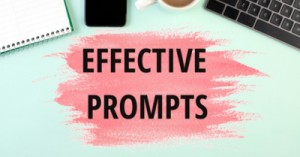


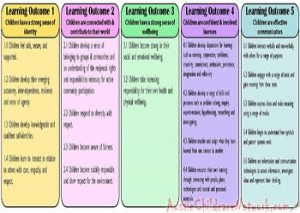 Here is the list of the EYLF Learning Outcomes that you can use as a guide or reference for your documentation and planning. The EYLF
Here is the list of the EYLF Learning Outcomes that you can use as a guide or reference for your documentation and planning. The EYLF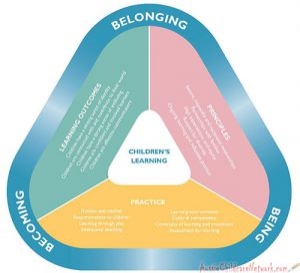 The EYLF is a guide which consists of Principles, Practices and 5 main Learning Outcomes along with each of their sub outcomes, based on identity,
The EYLF is a guide which consists of Principles, Practices and 5 main Learning Outcomes along with each of their sub outcomes, based on identity, This is a guide on How to Write a Learning Story. It provides information on What Is A Learning Story, Writing A Learning Story, Sample
This is a guide on How to Write a Learning Story. It provides information on What Is A Learning Story, Writing A Learning Story, Sample One of the most important types of documentation methods that educators needs to be familiar with are “observations”. Observations are crucial for all early childhood
One of the most important types of documentation methods that educators needs to be familiar with are “observations”. Observations are crucial for all early childhood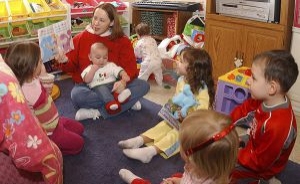 To support children achieve learning outcomes from the EYLF Framework, the following list gives educators examples of how to promote children's learning in each individual
To support children achieve learning outcomes from the EYLF Framework, the following list gives educators examples of how to promote children's learning in each individual Reflective practice is learning from everyday situations and issues and concerns that arise which form part of our daily routine while working in an early
Reflective practice is learning from everyday situations and issues and concerns that arise which form part of our daily routine while working in an early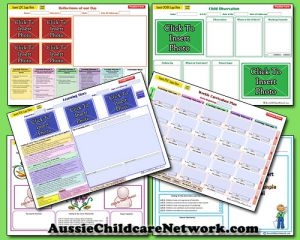 Within Australia, Programming and Planning is reflected and supported by the Early Years Learning Framework. Educators within early childhood settings, use the EYLF to guide
Within Australia, Programming and Planning is reflected and supported by the Early Years Learning Framework. Educators within early childhood settings, use the EYLF to guide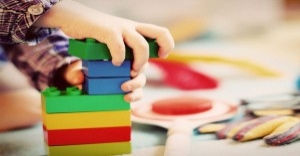 When observing children, it's important that we use a range of different observation methods from running records, learning stories to photographs and work samples. Using
When observing children, it's important that we use a range of different observation methods from running records, learning stories to photographs and work samples. Using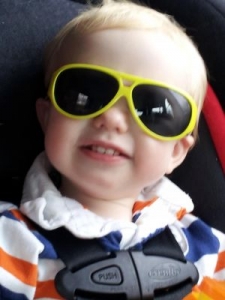 This is a guide for educators on what to observe under each sub learning outcome from the EYLF Framework, when a child is engaged in
This is a guide for educators on what to observe under each sub learning outcome from the EYLF Framework, when a child is engaged in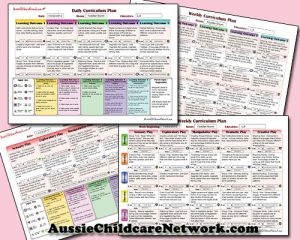 The Early Years Learning Framework describes the curriculum as “all the interactions, experiences, activities, routines and events, planned and unplanned, that occur in an environment
The Early Years Learning Framework describes the curriculum as “all the interactions, experiences, activities, routines and events, planned and unplanned, that occur in an environment
